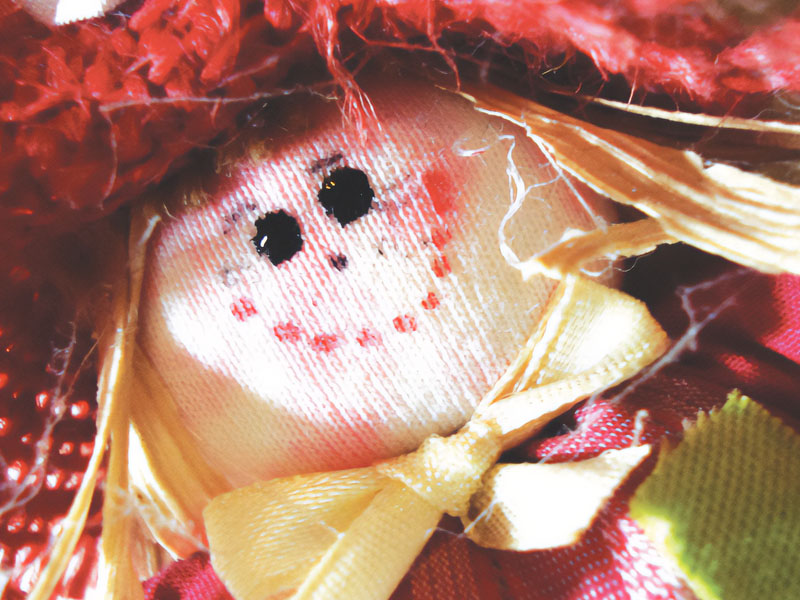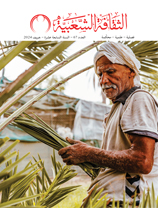«Al-Aa’ja »: A Traditional Doll to Entertain Daughters in the South of Jordan
Issue 9

Saad Al-Tuwaisi (Jordan)
Mansoor Al-Shuqairat (Jordan)
This doll is common among the Bedouins of the south of Jordan. It goes by the same name Al-Aa’ja among the tribal societies of Bedouins of the South, (known as the Al- Ammareen), Bedouins in the area of Petra, and by the Bedouins of the Rum Valley. The origin of this name is unknown. The word “Al-Aa’ja” in the Arabic language means something made of ivory. In “Lisan Al-Arab,” (Language of the Arabs), written by the linguist Ibn Manzour, Al-A’aja is an “ivory endowment or grip that the woman holds in her hand”. In “Mu’ajam Al-Sahhah” (Proofreader Dictionary), by Abul-Abbas AlJohari, Al-Aa’ja is defined as “the elephant bone, as the single bone is called Aa’ja”, a name whose meaning is contradicted by the fact that the traditional toy is now made of fabric or cloth. The continued use of the word “Al-Aa’ja” reflects the long history of this conventional product. The doll was originally made of ivory and is now made of cloth yet, despite the change of composition, the name remains the same. Maybe the change of material used to make the doll came as a result of changes in the environmental and economic circumstances of those who have traditionally made the doll. This assumption is supported by the local traditions, which indicate that the word “Aa’ja” means “beauty”. Traditional crafts and embroideries are considered among the most important examples of intangible cultural heritage. Many such examples have disappeared, while other forms are endangered. This is because of the speed at which our culture has been transformed by economic and cultural openness, as can be seen in our Arab markets. Today, Arab markets are overflowing with foreign-made products, many of which represent cultural elements and values that contradict those of the local cultures. Dolls are, perhaps, the best examples of such cultural products. Dolls play a prominent role in the early stages of a child’s teaching and learning. Along with other games, they are important in expanding the development of a child’s mental capacity, thus positively affecting his or her achievement. Many scientific studies show that the physical shape of dolls and other similar toys has a clear impact on the degree to which a child perceives morality. Development of imagination and emotional growth are also influenced by the toys children play with, and psychological studies of children also indicate that dolls and games play a definite role in the psychology of the child. Because of the important role dolls play in the development of children, care must be taken when choosing one. Dolls are more than just toys. They reflect the values of local cultures and influence a child’s educational and psychological development. The difference between foreign-made dolls and those made locally, is that locally-made dolls are harmonious with local cultures. This fact can be demonstrated no more clearly than by comparing the shape of the traditional Al-Aa’ja to that of the famous fashion doll “Barbie,” which is found worldwide..




































































